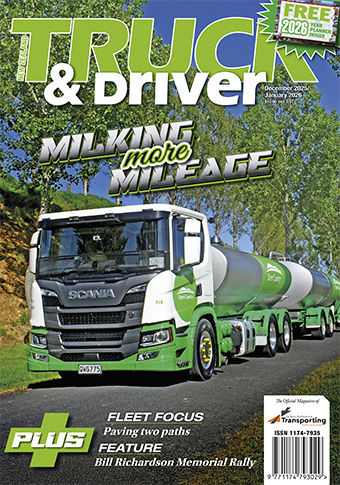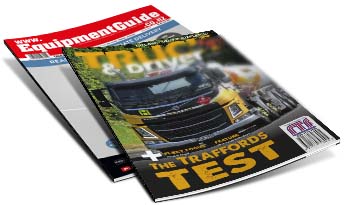Ia Ara Aotearoa Transporting New Zealand News


Reducing speed limits not the answer to poor roads
You don’t have to travel far on our roads to feel like you’re on a dodgem track – having to take evasive action to avoid potholes and uneven road surfaces.
Instead of making the necessary investment to maintain and repair these roads, Waka Kotahi New Zealand Transport Agency’s plan seems to be to simply reduce speed limits and blame speed for any crashes.
The latest proposal is to lower the speed limit from 100km/h to 80km/h on an 83-kilometre section of the Napier-Taupo Road (State Highway 5).
Because of historically poor design and engineering, the road surface on SH5 is in a terrible state. It has poor traction, making it like driving on ice. The surface has also been so frequently patched that it looks like a patchwork quilt. The unevenness this creates adds to the treacherous nature of the route as vehicles bounce around.
The type of bitumen used is totally inadequate for the temperature variations the region experiences, with very hot temperatures in summer and frequently heavy snowfall in winter. This contributes to flushing and the chip seal not sticking to the base layer.
...You don’t have to travel far on our roads to feel like you’re on a dodgem track – having to take evasive action to avoid potholes and uneven road surfaces.
Instead of making the necessary investment to maintain and repair these roads, Waka Kotahi New Zealand Transport Agency’s plan seems to be to simply reduce speed limits and blame speed for any crashes.
The latest proposal is to lower the speed limit from 100km/h to 80km/h on an 83-kilometre section of the Napier-Taupo Road (State Highway 5).
Because of historically poor design and engineering, the road surface on SH5 is in a terrible state. It has poor traction, making it like driving on ice. The surface has also been so frequently patched that it looks like a patchwork quilt. The unevenness this creates adds to the treacherous nature of the route as vehicles bounce around.
The type of bitumen used is totally inadequate for the temperature variations the region experiences, with very hot temperatures in summer and frequently heavy snowfall in winter. This contributes to flushing and the chip seal not sticking to the base layer.
If all the issues with the road surface aren’t enough, when a vehicle comes into the path of an accident situation the lack of adequate runoff areas, poor shoulder designs, and steep shoulder gradients means taking evasive action is extremely difficult.
At a time when our supply chain is struggling to keep up with demand and our economy needs goods to be flowing freely, slowing everyone down on the road slows the economy down: Everything takes more time and money, productivity drops and costs get passed on to householders.
Waka Kotahi has said its aim in dropping the speed limit is to save lives and prevent serious injuries from crashes.
Former V8 Supercars driver and road safety advocate Greg Murphy is based in Hawke’s Bay and drives the Napier-Taupo regularly. In an article on Stuff, he said that lack of training and driving experience – along with poor decisionmaking – was behind the bulk of the crashes.
He said the highway was in need of repair and the proposed speed limits were ignoring the real issues – and I fully agree with him.
This Easter, eight people lost their lives on our roads – the highest number in a decade for that holiday period. The Government is fixated on speed and the roading system.
But people use the roads – on foot, on bikes and scooters, and in cars and trucks, of all varieties. While our truck drivers have plenty to say about the roading system, it’s people’s behaviour on the roads and a lack of skills to get themselves out of trouble that causes so much harm.
It’s time for the politicians and senior transport officials to get out in the regions and drive the roads so they can see firsthand what the real issues are. Wholesale lowering of speed limits or putting up countless “uneven surface” signs is like plastering over a crack: It does nothing to solve the problem – it just gives the impression something is being done. Truck drivers and motorists deserve better.
As a Wellingtonian and former Mayor of Porirua I have followed Let’s Get Wellington Moving (LGWM) very closely – because I know improvements are desperately needed to help make life easier for all Wellington’s transport users, including freight operators.
LGWM is a joint initiative between the Government, Wellington City Council, Greater Wellington Regional Council, and Waka Kotahi NZTA.
However, a damning review of its current state found that it’s at risk of failing to deliver an integrated, cohesive, prioritised and outcomes-driven transport package for the region. The review found the programme was “at risk of failing to deliver,” and needed to be paused so major problems could be addressed.
The review said the recommended pause would have implications for the timeframes, scope and cost of transport projects in Wellington. This is not the news Wellingtonians wanted to hear: We have been waiting far too long already for progress on unlocking the city’s potential.
RTF believes LGWM needs to prioritise reliable mass transit routes, a second Mt Victoria tunnel and a solution to the other chokepoints, at the Terrace Tunnel and the Basin Reserve.
As the number of people living and working in the central city increases, so too will the need for trucks to deliver the goods to keep the city operating. If we’re going to progress as a city or as a region, we need to be focused on the things that are going to make it an easy place to move people and critical freight around. We need effective leadership to make that happen and we need it to happen as soon as possible.



 + EQUIPMENT GUIDE - FREE
+ EQUIPMENT GUIDE - FREE
